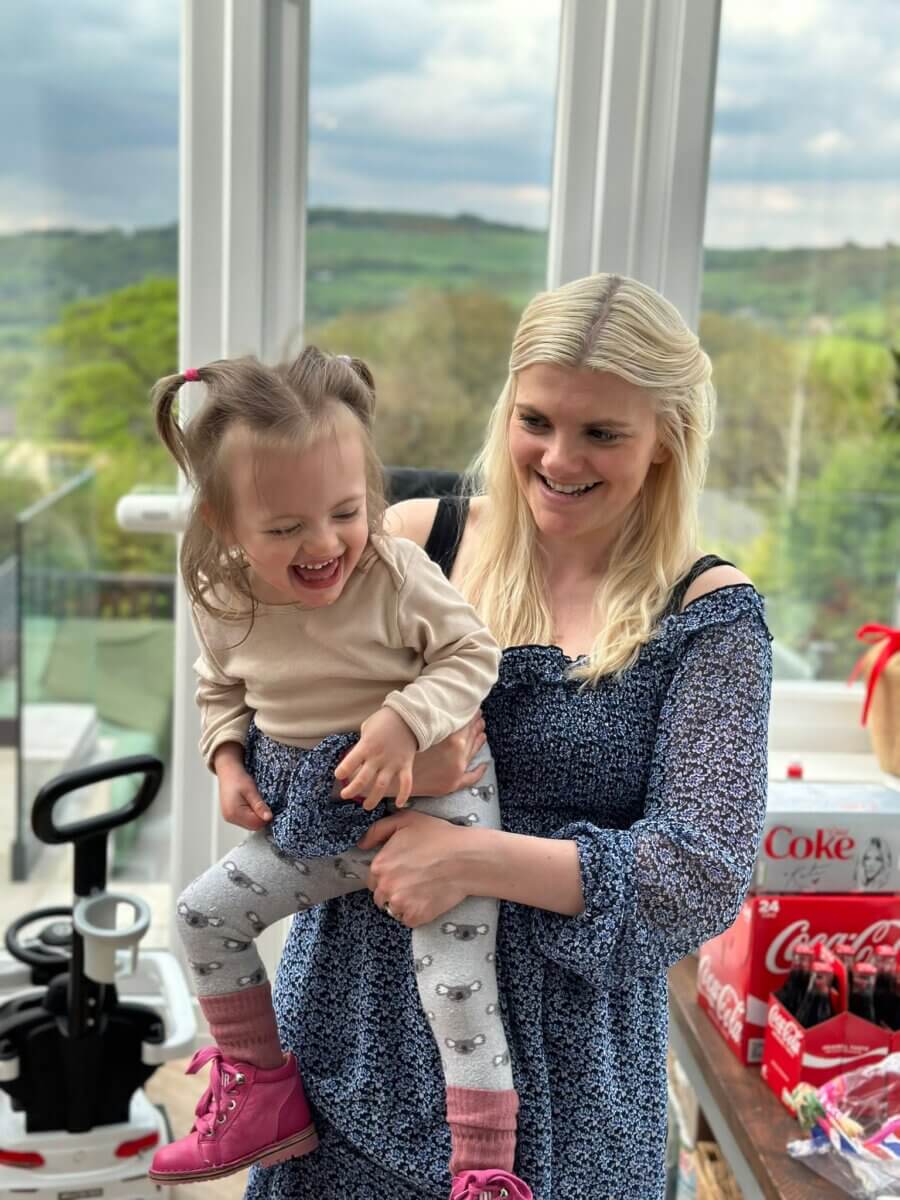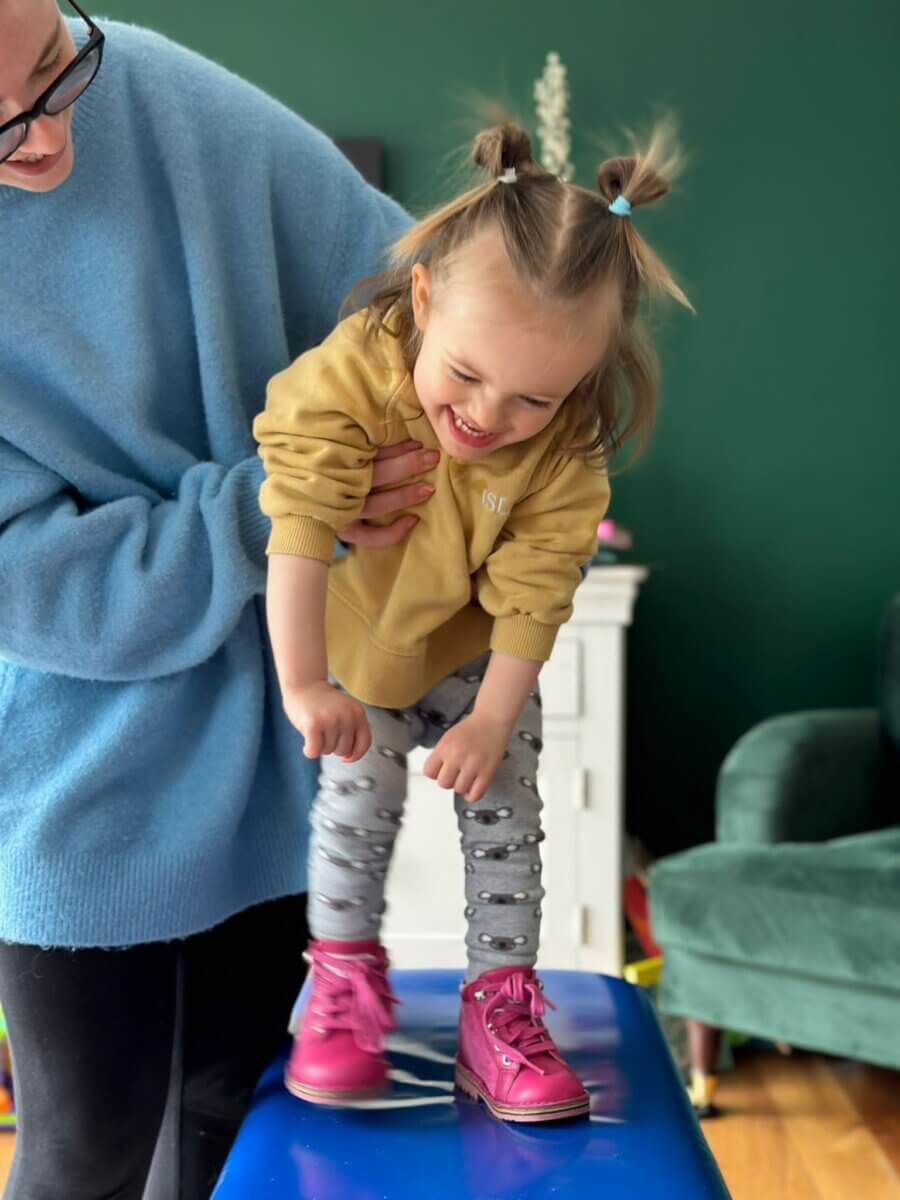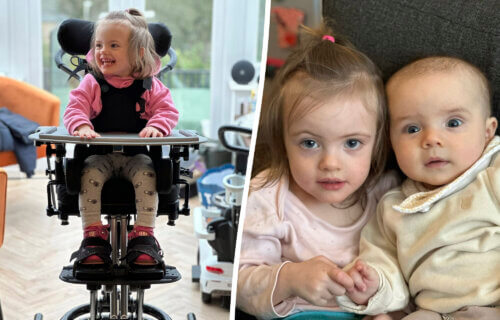DURHAM, N.C. — A two-year-old girl with cerebral palsy may be able to walk again – thanks to her baby brother. Toddler Isla Duffy will travel to Duke University Hospital in North Carolina this August to undergo a stem cell treatment that makes use of the blood from her six-month-old baby brother Leo’s umbilical cord.
The blood is rich with stem cells, which scientists believe gives it amazing regenerative properties that may also give it the ability to treat different cancers, immune system deficiencies, and genetic disorders. Isla was deprived of oxygen and suffered a seizure shortly after birth in January 2021, leading to the development of cerebral palsy — a debilitating condition which impairs motor functions. It has left Isla unable to verbally communicate and gives her extremely limited mobility.
Currently, there is no known cure for the condition, but pioneering research in the United States has found success in treating cerebral palsy’s effects using stem cells.
Isla’s mom and dad, Emily and Sim, were overjoyed when they found out their daughter qualified for treatment using her younger brother Leo’s cord blood. Leo was born in November of 2022. Now, they’re aiming to raise over $30,000 for the treatment and vital physiotherapy to follow it.
“It was a massive relief finding out that Isla qualified,” says Emily on social media. “You need at least 50% genetic compatibility – and we were lucky to be told Leo was a good enough match.”
Scroll down to see 4 reasons why stem cells are so special to modern medicine

“When you have a child that has cerebral palsy you’re told there’s no treatment or cure – so I guess I have high aspirations about the treatment now that there is finally something we can do. A successful treatment could allow her to develop exponentially quite quickly. She might never have been able to talk, but if the treatment goes well there’s a chance she could,” the 32-year-old mother continues.
“She also might be able to learn to walk much faster. Currently Isla can’t sit independently, crawl or walk. Cerebral palsy limits her a lot. She is also non-verbal, and has suspected autism which makes communication with a very frustrated little girl extremely hard.”
“She loves books, especially sensory books, and loves to play outside. She really loves stroking animals like dogs and playing in water too. She just wants to be able to do what other two-year-olds can do.”

Isla’s mother notes that, at first, her daughter was uninterested in interacting with Leo, but as he’s grown, the two regularly play with the same toys and flip through pages of books together.
“Hopefully the treatment will give her a fresh lease of life, even just little things like being able to play with other kids and Leo,” Emily says online. “It’s been lovely seeing them grow closer, and hopefully the treatment will help with that too.”
The parents aim to travel to America this summer for Isla to undergo the $15,000 self-funded treatment at the world-leading Duke University Hospital.
“At the moment there is no cure for cerebral palsy at all. But it is the most common motor disability in children affecting 1 in 400 in the U.K.,” Isla’s father Sim explains.
“It is also one of many conditions under clinical trials attempting to treat it. It’s a very difficult and long process though – it’s taken us six months and a lot of luck to qualify.”

Sim notes that the United Kingdom “is miles behind” in terms of stem cell research. However, universities and hospitals around the world are now offering trial treatments as scientists continue to analyze the power of regenerative medicine.
“In the U.S. they’re very strict about matches, the blood type has to be compatible and the genetic match between the donor and patient has to be close,” the father adds. “We had that in mind when we decided to have another child, and so when Leo was born in November, we made sure to save his cord blood.”
Stem cells have advanced regenerative properties. Adding them to a child’s body could possibly replace, fix, and rejuvenate cells in their body.
“The best part is it is not even a scary or extensive surgery, it’s just administered via an IV drip into the bloodstream, and it only takes 20 minutes,” the 32-year-old father says online. “The effects can be amazing. In Duke University’s case every child has had increased gains in movement after treatment, and there are reports of children in Australia who have even been able to walk or talk.”

The determined parents urge others to save their children’s cord blood in case they or their children may need it in the future. They say discovering Isla qualified for the expensive treatment was “mega” — but they need to fundraise in order to afford it.
“We also want to raise as much awareness as possible about the issue,” Sim says. “We’ve had around 60 to 70 families get in touch about the treatment since and have raised over $11,000.”
“I think it’s because Isla is just so happy, she has such an amazing smile. I really want to urge all parents to freeze their child’s cord blood, it might save you from dementia, Parkinson’s or even cancer. I think we’ll be surprised in the future how useful it might be.”
Information about supporting Isla and her family is available here.
Stem cells have the unique ability to divide and differentiate into a variety of cell types. This characteristic allows them to replenish cells in the body, thus facilitating regeneration and repair. There are several key attributes that provide them with this ability:
- Self-Renewal: Stem cells have the ability to go through numerous cycles of cell division while maintaining their undifferentiated state. This allows the stem cell population to be maintained in tissues and organs throughout an organism’s life.
- Potency: Stem cells have the ability to differentiate into different cell types.
- Environment-Sensitivity: Stem cells are influenced by their environment, or niche. The stem cell niche is a specialized microenvironment where stem cells reside in the body. The niche provides signals that regulate stem cell behavior, including the balance between self-renewal and differentiation. This helps to regulate tissue regeneration and repair.
- Division Asymmetry: When stem cells divide, they can do so asymmetrically, producing one daughter cell identical to the parent (maintaining the stem cell population) and another that is differentiated. This allows stem cells to generate specialized cells while still maintaining their population.
The potential of stem cells in regenerative medicine and tissue engineering is vast. They could be used to replace or repair damaged tissues or organs, create models of diseases for research, or test new drugs for safety and efficacy. However, there are also ethical and technical challenges associated with stem cell research that must be addressed.
South West News Service writer Ed Cullinane contributed to this report.

